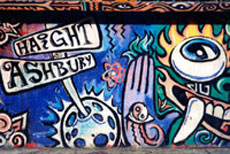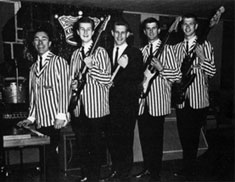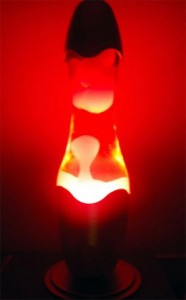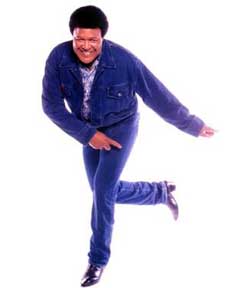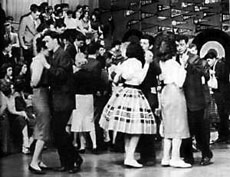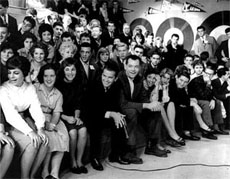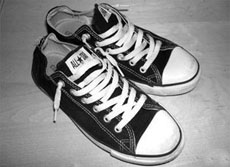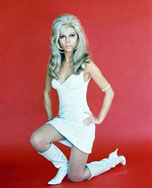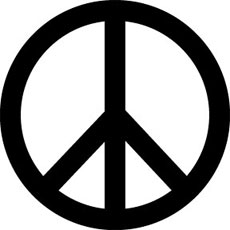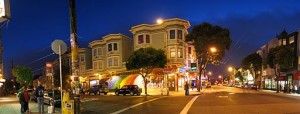🎸 The Roots of Rock and Roll: Where It All Began
Chuck Berry, one of the undisputed founding fathers of Rock and Roll, once summed up the genre’s origin with a single, unforgettable line:
“The blues had a baby. They named it Rock and Roll.”
That poetic phrase captures the essence of Rock’s birth. At its core, Rock and Roll is the electrified, amplified, and rebellious offspring of Rhythm and Blues, but like any family tree, the branches stretch far and wide. As it evolved, Rock absorbed influences from across the American musical landscape—blending tradition, experimentation, and attitude into something entirely new.
🎶 Rhythm & Blues: Rock’s Closest Kin
Before anything was called “Rock and Roll,” it lived under the name Rhythm and Blues (R&B). This genre, born out of African American communities in the 1940s, brought a fusion of gospel, blues, and jazz into danceable, emotionally charged songs. With its driving beats and electric guitars, R&B laid the foundation for what would soon explode into mainstream consciousness as Rock.
🤠 Country Music: Twang Meets Grit
While Rhythm and Blues gave Rock its groove, Country Music added twang, storytelling, and a bit of good ol’ Southern flair. Somewhere between the juke joint and the honky tonk, Rock found some of its most vital DNA. Subgenres like Hillbilly Blues, Western Swing, Honky Tonk, and Bluegrass played a pivotal role in Rock’s early development.
These styles added fiddles, steel guitars, and vocal stylings that gave Rock and Roll its wide emotional range—from rowdy barn burners to tender ballads.
🎸 Rockabilly: The Big Bang Moment
One of the first true hybrids of Country and R&B came in the form of Rockabilly. This was Rock’s first real wave, and it hit hard. In 1954, Elvis Presley recorded “That’s All Right (Mama)” at Sun Records—a moment often called the spark that lit the fire.
Soon after, Bill Haley and His Comets released “Rock Around the Clock,” which went global, smashing charts and spreading the new sound across continents. Artists like Carl Perkins, Jerry Lee Lewis, and Johnny Cash helped drive Rockabilly into the hearts of young fans—and onto the radar of concerned parents.
🙌 Gospel: Soulful Roots and Soaring Harmonies
Gospel music was another cornerstone of Rock’s foundation, especially when it came to vocal style and group harmonies. Many early Rock stars, including Sam Cooke, Little Richard, and Aretha Franklin, grew up singing in churches, where call-and-response, rich harmonies, and passionate delivery were the norm.
Those same elements gave Rock its emotional punch and performance style. Gospel taught Rock how to raise the roof—and lift the soul.
💋 Teen Idols: When Rock Got a Makeover
They say “sex sells”—and Rock and Roll proved it early on.
Elvis Presley’s swinging hips earned him the nickname “Elvis the Pelvis” and helped launch him into superstardom. But after the initial explosion of rock, things took a darker turn. Several major figures were suddenly out of the picture:
- Buddy Holly, Ritchie Valens, and The Big Bopper died in the 1959 plane crash known as “The Day the Music Died.”
- Elvis was drafted into the U.S. Army.
- Chuck Berry was jailed on a Mann Act violation.
- Jerry Lee Lewis shocked fans by marrying his 13-year-old cousin.
- Alan Freed, the DJ who helped name and popularize Rock and Roll, was convicted in the Payola scandal.
Suddenly, Rock’s wild image needed a makeover—and the music industry responded with a new kind of star: the clean-cut Teen Idol.
💖 The Rise of the Teen Heartthrobs
When the Winter Dance Party Tour resumed after the crash, its tone had changed. Now headlining were young, polished singers who traded gritty blues riffs for soft, romantic melodies. Leading the charge were:
- Jimmy Clanton
- Frankie Avalon
- Robert Velline (better known as Bobby Vee)
Their smooth vocals and boy-next-door looks made them instant favorites among teenage girls and concerned parents alike. They were soon joined by other chart-toppers like Neil Sedaka, Bobby Vinton, and California’s surf-pop pioneers The Beach Boys and Jan & Dean.
These artists helped carry Rock through its “in-between” phase—bridging the gap between the raw rebellion of the 1950s and the British Invasion of the 1960s.
🌊 In the End…
Rock and Roll didn’t rise from a single genre or sound—it was born from a collision of styles, traditions, and cultural influences. From the pulpit to the honky tonk, the gospel choir to the juke joint, Rock is the sum of many parts. And like any good family, it may fight with itself, but its roots run deep.
So the next time you hear that driving beat, smooth harmony, or twanging guitar, remember: Rock was raised on rhythm, raised in the church, and raised with a little rebellion.
And as Chuck Berry said—the Blues had a baby, and it’s still rocking today.
